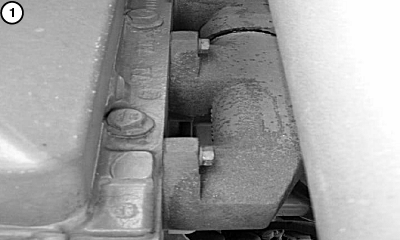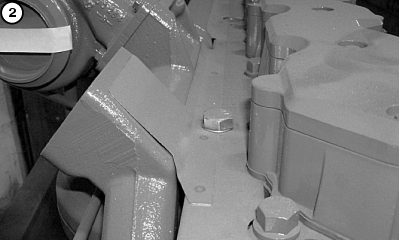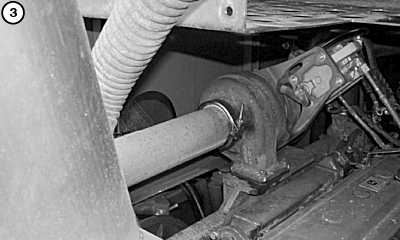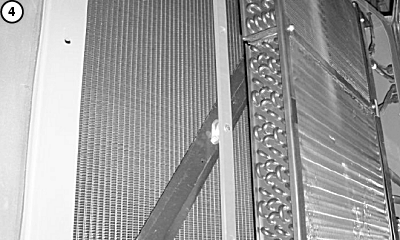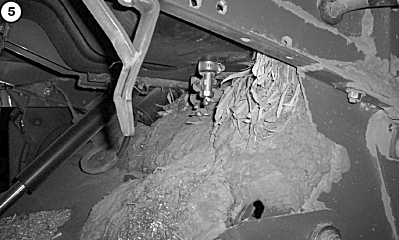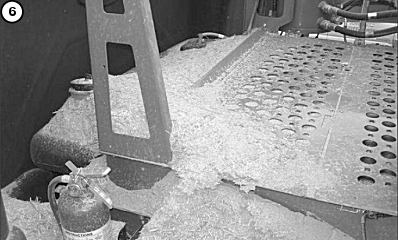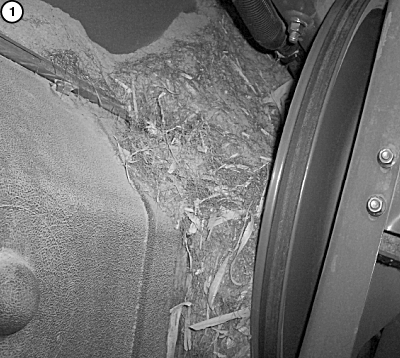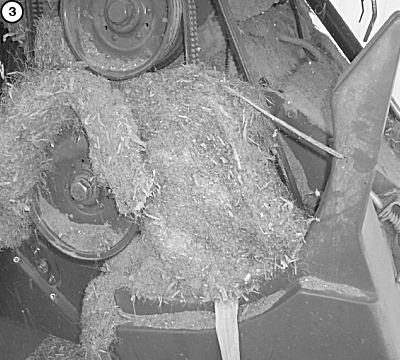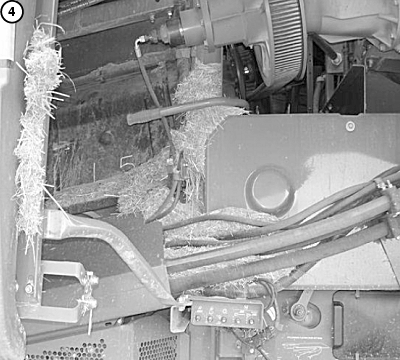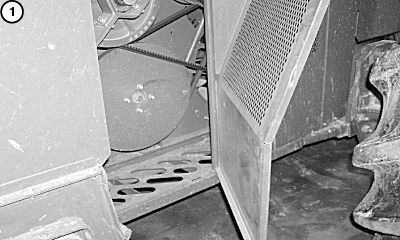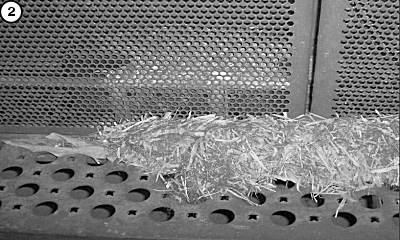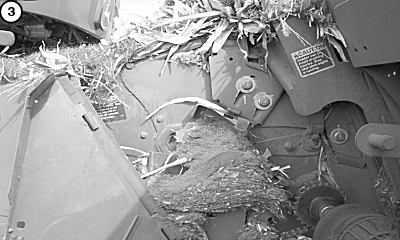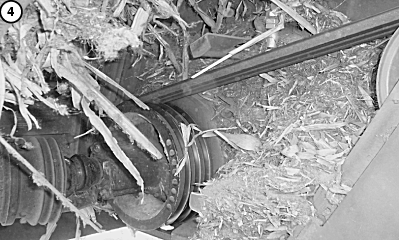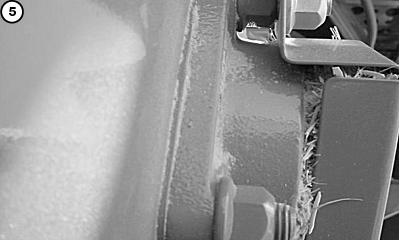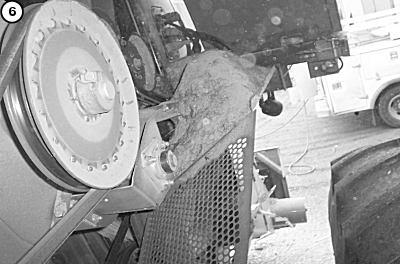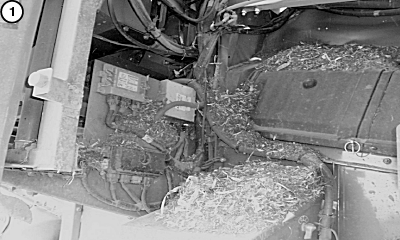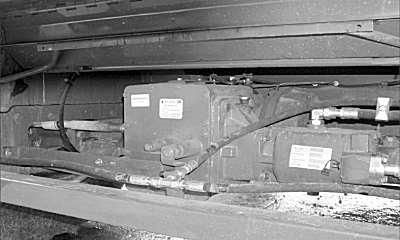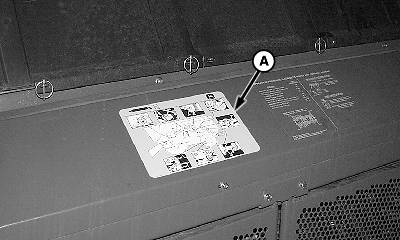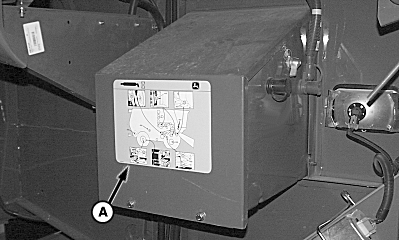Cleaning Out Machine (Periodic)
|
Important Notes
The machine must be inspected periodically throughout the harvest day. Buildup of crop material and other debris must be removed to ensure proper machine function and to reduce the risk of fire. This section shows primary areas of the machine that require periodic inspection and cleaning. Frequency of inspections and cleanings vary depending on a number of factors, including operating conditions, machine settings, crop conditions, operating speeds, and weather conditions, particularly dry, hot, and windy conditions. Various photographs show accumulations of crop material and other debris prior to cleaning. This was allowed for illustrative purposes only. Primary areas that need inspection and cleaning are:
|
While there are other areas that require regular cleaning, these areas provide the greatest impact on fire prevention. Using compressed air can make the job of keeping these areas clean much easier. Harvesting certain crops can cause special issues. Some crops are very "sticky" and it is often more difficult to clean the machine when harvesting these crops. Examples of these crops include sunflower, canola, and safflower. Take special care in cleaning the machine when harvesting these crops. Regular and thorough cleaning of machine combined with other routine maintenance procedures listed in the Operator's Manual greatly reduce the risk of fire, chance of costly downtime, and improve machine performance. Always follow all safety procedures posted on the machine and in the Operator's Manual. Before carrying out any inspection or cleaning, always shut OFF engine, set parking brake, and remove key. |
OUO6075,0000020 -19-01JUL08-1/7 |
|
| ||
|
| ||
|
|
|
Engine Compartment
Crop material and other debris can accumulate in engine compartment. Direction of wind, type of crop, and crop moisture content can all have an effect on where and how much crop material and debris can accumulate. Inspect and clean engine compartment frequently throughout the harvest day. Primary areas that must be inspected and cleaned are: |
1.
Exhaust Manifold
|
OUO6075,0000020 -19-01JUL08-2/7 |
|
| ||
|
|
|
Pulleys
Crop material and other debris may accumulate inside and around pulleys. Inspect and clean these areas periodically throughout the harvest day. Some examples of areas to inspect and clean are shown. |
1.
Clean Grain Elevator Drives
|
OUO6075,0000020 -19-01JUL08-3/7 |
|
| ||
|
| ||
|
|
|
Shields and Ledges
Crop material and other debris may accumulate on, behind, and/or under shields. Inspect and clean these areas periodically throughout the harvest day. Some examples of areas to inspect and clean are shown. |
1.
Right Side Catwalk Area
|
OUO6075,0000020 -19-01JUL08-4/7 |
|
|
|
Wiring Harnesses and Hydraulic Hoses
Crop material and other debris may accumulate on, between, and/or around wiring harnesses and hydraulic hoses. Inspect and clean these areas |
periodically throughout the harvest day. Some examples of areas to inspect and clean are shown.
1.
Right Side Batteries
|
OUO6075,0000020 -19-01JUL08-5/7 |
|
Transmission
Crop material and other debris may accumulate on top of and around transmission. Inspect and clean area periodically throughout the harvest day. |
|
OUO6075,0000020 -19-01JUL08-6/7 |
|
Lubrication Decal Locations
Lubrication decals (A) show the different locations of grease points around the machine. Follow lubrication times provided on decals and refer to hour intervals listed in Lubrication and Maintenance section for further information. Bearing failures or overheating can result in a fire. To reduce bearing failures or overheating, always refer to lubrication decals on machine. Crop material and other debris may accumulate around bearings and bearing covers. Inspect and clean these areas periodically throughout the harvest day.
|
|
OUO6075,0000020 -19-01JUL08-7/7 |
